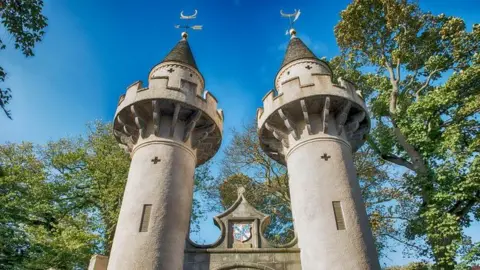University 'still commemorates' slave trade donors
 University of Aberdeen
University of AberdeenThe University of Aberdeen still commemorates benefactors linked to the slave trade through named bursaries, paintings and stained glass windows, a new study has found.
The university-commissioned report said it still had endowments worth £375,000 linked to the legacy of slavery.
It was also found that King’s College and Marischal College - which later became the University of Aberdeen - both profited from financial ties to multiple donors engaged in slavery and slave trading.
Staff and leaders at the institution were also found to have enslaved people and been "active participants" in the expansion of slavery and empire. The university will now consider potential actions to address its legacy.
Archives within the university were found to have had “copious documentation of both the complicity of North-East Scots in plantation slavery but also enslaved peoples who constantly resisted their enslavement”.
Physical commemorations at the university include a collection of paintings and sculptures donated by Alexander Farquharson Henderson of Caskieben.
The university has acknowledged the connections between the painting’s donor and the wealth inherited from his father’s involvement in colonial slavery.
A painting in the collection was found to be worth £400,000 in 2014.
Other paintings and a stain-glass window in the name of Gilbert Ramsay - who sold enslaved people - have been identified.
'Listening exercise'
A full list of donors and benefactors - as well as the financial values involved - can be found within the report.
The University of Aberdeen previously installed a plaque at the Powis Gateway on its campus acknowledging the links to slavery in its funding.
Neil Curtis, the university's head of museums and special collections, said the institution had benefited from slavery to an amount "in the millions".
"Most of it has been spent but there is still money that can be traced back to some of these people which has been set aside for particularity purposes but still exists as cash," he said.
"There's some money today that we can start thinking about, what should we be doing with that money that is most appropriate?
"There's also just acknowledging that history - it's not for a small group of people to decide, this is why we are having a listening exercise where we want to get other people's opinions."
